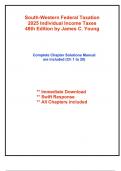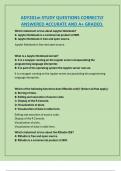Examen
Solutions for South-Western Federal Taxation 2025 Individual Income Taxes, 48th Edition by Young (All Chapters included)
- Grado
- Institución
Complete Solutions Manual for South-Western Federal Taxation 2025 Individual Income Taxes, 48th Edition by James C. Young, William H. Hoffman, William A. Raabe, David M. Maloney, Annette Nellen ; ISBN13: 9780357988954...(Full Chapters included and organized in reverse order from Chapter 20 to 1)......
[Mostrar más]




